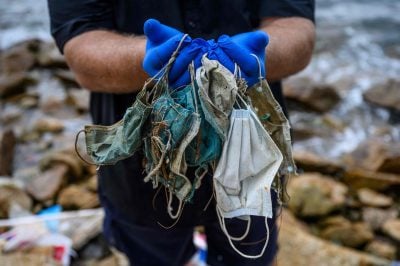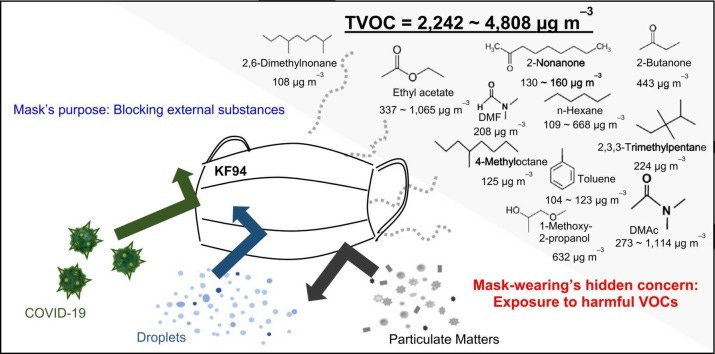Mask Toxicity: Four Studies Document Toxic Materials in Masks that Leach Out Many Carcinogens!
Heavy metals, organic chemicals (plasticizers & solvents), microplastics & microfibers, free radicals

All Global Research articles can be read in 51 languages by activating the Translate Website button below the author’s name.
To receive Global Research’s Daily Newsletter (selected articles), click here.
Click the share button above to email/forward this article to your friends and colleagues. Follow us on Instagram and Twitter and subscribe to our Telegram Channel. Feel free to repost and share widely Global Research articles.
***
My Take…
There are many toxic compounds hiding in disposable face masks that can be categorized as:
- Heavy metals (mainly lead, antimony, copper), one study found 10 heavy metals
- organic chemicals – plasticizers, organic solvents, volatile organic compounds
- microplastics (polypropylene) and microfibers
- environmentally persistent free radicals
All of these leach out of the masks, with surgical masks leaching more heavy metals and chemicals when exposed to moisture and saliva, than N95 masks.
“Face masks have a three-dimensional porous structure in which the additives are dispersed but not bounded, which contributes to their release into the environment”
Some best selling children’s masks have high levels of heavy metals like lead.
Also, if children chew on their masks, they can have additional exposure to these heavy metals and various carcinogenic chemicals.
Several of the organic chemicals released by masks cause reproductive toxicity, neurological toxicity and are carcinogenic.
Microplastics and microfibers released by masks are also toxic to humans.
Quality control of disposable masks is lacking, with different masks from the same box containing different amounts of heavy metals, for example.
Personal comment: The level of contamination of surgical masks and N95 masks is much worse than I had suspected. It might be useful for people to print out these studies and send them to anyone thinking about implementing mask mandates again, advising them that they’re engaging in criminal conduct if they proceed.
That best selling children’s masks have high contamination with heavy metals like lead, actually does not surprise me at all. Our political and healthcare leaders have repeatedly shown a strong intent to harm children throughout the COVID-19 pandemic.
*
Note to readers: Please click the share button above. Follow us on Instagram and Twitter and subscribe to our Telegram Channel. Feel free to repost and share widely Global Research articles.
Dr. William Makis is a Canadian physician with expertise in Radiology, Oncology and Immunology. Governor General’s Medal, University of Toronto Scholar. Author of 100+ peer-reviewed medical publications.
Featured image is from COVID Intel
 The Worldwide Corona Crisis, Global Coup d’Etat Against Humanity
The Worldwide Corona Crisis, Global Coup d’Etat Against Humanity
by Michel Chossudovsky
Michel Chossudovsky reviews in detail how this insidious project “destroys people’s lives”. He provides a comprehensive analysis of everything you need to know about the “pandemic” — from the medical dimensions to the economic and social repercussions, political underpinnings, and mental and psychological impacts.
“My objective as an author is to inform people worldwide and refute the official narrative which has been used as a justification to destabilize the economic and social fabric of entire countries, followed by the imposition of the “deadly” COVID-19 “vaccine”. This crisis affects humanity in its entirety: almost 8 billion people. We stand in solidarity with our fellow human beings and our children worldwide. Truth is a powerful instrument.”
ISBN: 978-0-9879389-3-0, Year: 2022, PDF Ebook, Pages: 164, 15 Chapters
Price: $11.50 FREE COPY! Click here (docsend) and download.
We encourage you to support the eBook project by making a donation through Global Research’s DonorBox “Worldwide Corona Crisis” Campaign Page.


